Castillo de San Marcos
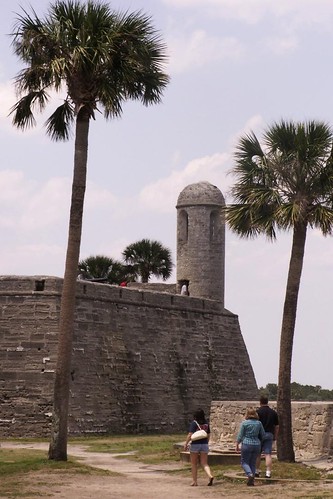
San Carlos Bastion
The last installment of the St. Augustine series....
The Castillo de San Marcos, begun in 1672 and completed in 1695, has never been taken in battle. It is the oldest masonry fort and the best-preserved example of a Spanish colonial fortification in the continental United States.
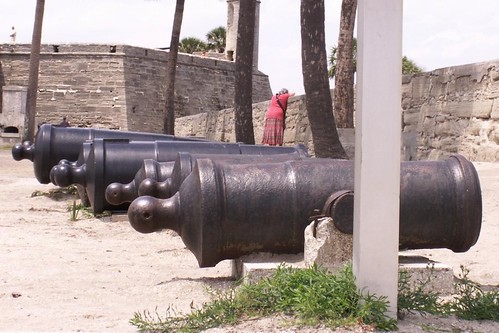
The fort is built of coquina, a type of a limestone rock formed from shells (mostly the tiny coquina clam) cemented together by their own calcium over about 500,000 years. This coquina construction replaced nine successive wooden fortifications.
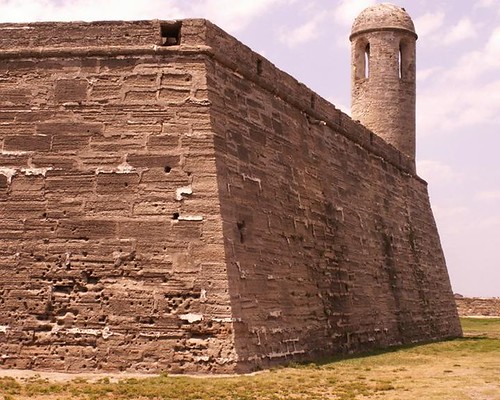
Musket ball holes. Coquina is pliable when quarried, rock hard when dried, and absorbs musket balls like a sponge.
In 1702, during the War of the Spanish Succession, English troops occupied St. Augustine and unsuccessfully beseiged the fort for 50 days. Says the National Park Service brochure, "The English burned the town before they left, but the Castillo emerged unscathed, thereby making it a symbolic link between the old St. Augustine of 1565 and the new city that rose from the ashes."
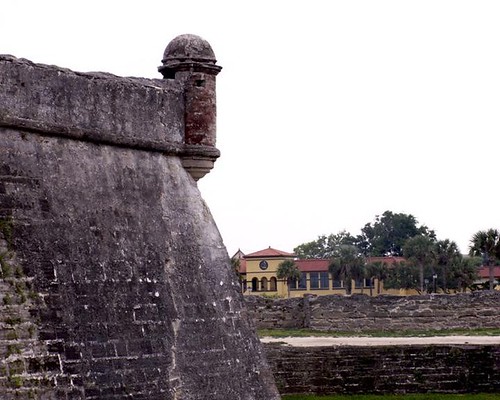
San Pedro Bastion, with a view toward the city.
The British again attacked the Castillo in 1740, this time for 27 days, without success. "In 1763, as an outcome of the Seven Years' (French and Indian) War, Spain ceded Florida to Great Britain in return for La Habana, Cuba. The British garrisoned Matanzas and strengthened the Castillo, holding the two forts through the American Revolution. The Treaty of Paris of 1783, which ended the war, returned Florida to Spain."
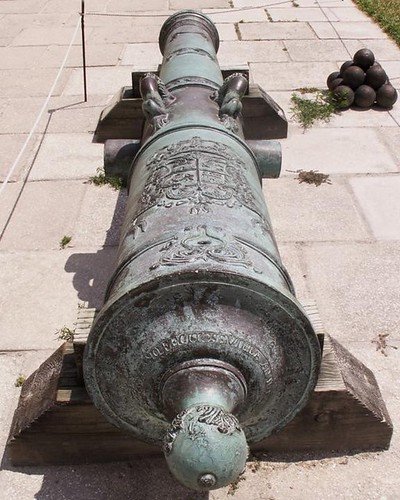
Spanish cannon.
The brochure continues, "Spain held Florida until 1821, when serious Spanish-American tensions led to its cession to the United States. The Americans renamed the Castillo Fort Marion and used it to house Indian prisoners during the Seminole War of 1835-42. Confederate troops occupied it briefly during the Civil War and Indians captured in Western military campaigns were held there later on. It was last used during the Spanish-American War as a military prison."
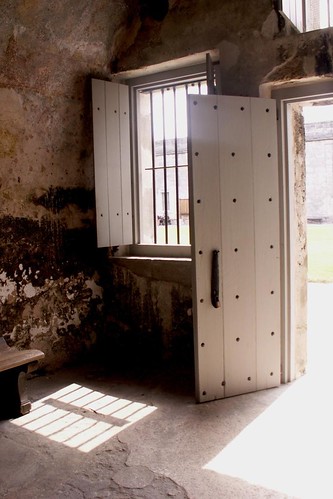
During Spanish times, storage rooms would have been stockpiled with gunpowder, ammunition, weapons, lumber, tools, and food such as dried beans, rice, flour, and corn. Such stockpiles were crucial during a siege because St. Augustine was not self-sufficient.
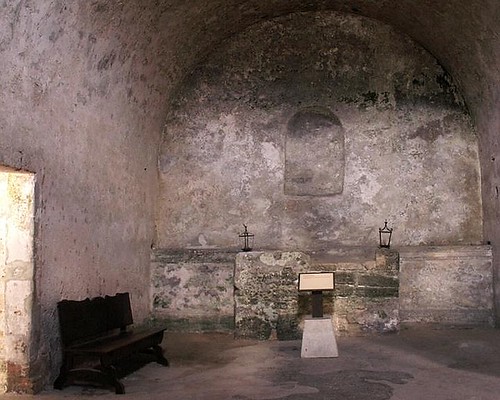
Chapel of St. Mark, altar. The Spanish established a mission system in Florida more than 100 years before they introduced it into the western United States.
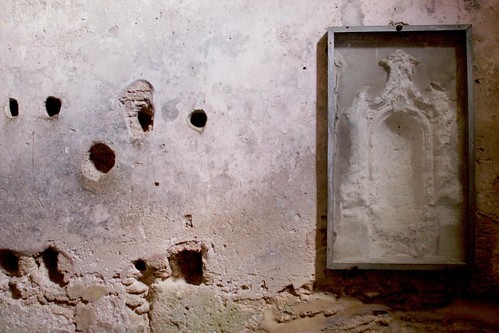
Chapel of St. Mark, shrine.
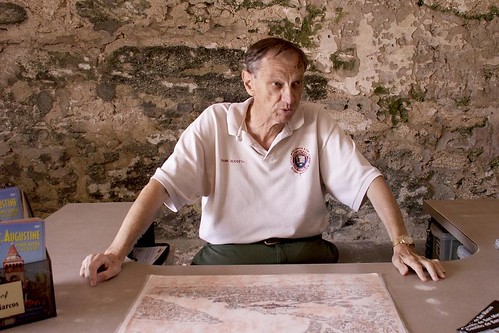
Frank Suddeth is a retired history teacher and a long-time volunteer at the fort. A fount of information, he grew up in St. Augustine and played hide-and-seek on these grounds as a kid. In the National Park Service video of the Castillo, Frank appears in several of his own re-enactment costumes.
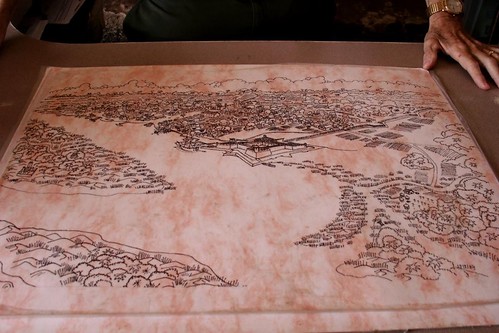
He had spent three days drawing this map of historic St. Augustine.
Back at home, the free-writing group I facilitate has just been the "Club Spotlight" in the Inverness Pioneer, one of our local papers (June 1 edition).
I patterned Writers' Circle (described here) after a group called Women Writing that met at the Cambridge Women's Center. Women Writing is where Mary and I had first met in 1994.
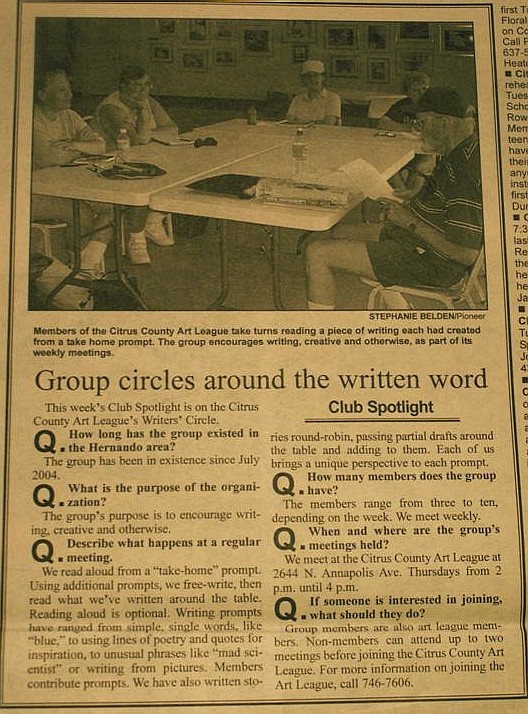
Thanks to Tom Ault, one of the founding members of Writers' Circle (he's currently on hiatus from the group, writing for Inverness Pioneer), editor Stephanie Belden paid us a visit on May 25 to do the "Club Spotlight" feature. Tom and his wife Paulette just hosted everyone in this photo (I'm over on the far left) and all our significant others at a terrific potluck that included a motorboat tour of Lake Henderson.
Coming up: A musical interlude....











3 Comments:
As informative as ever, and great that your group was spotlighted... it sounds like fun!
sorry to inform you, my uncle Frank passed away this past january. He was buried with great honors. the city treated our family as their own.
Anna
Anna, I was very sorry to hear of Frank's passing. He enriched my life with his knowledge and his enthusiasm. I wish you and your family comfort.
Post a Comment
<< Home